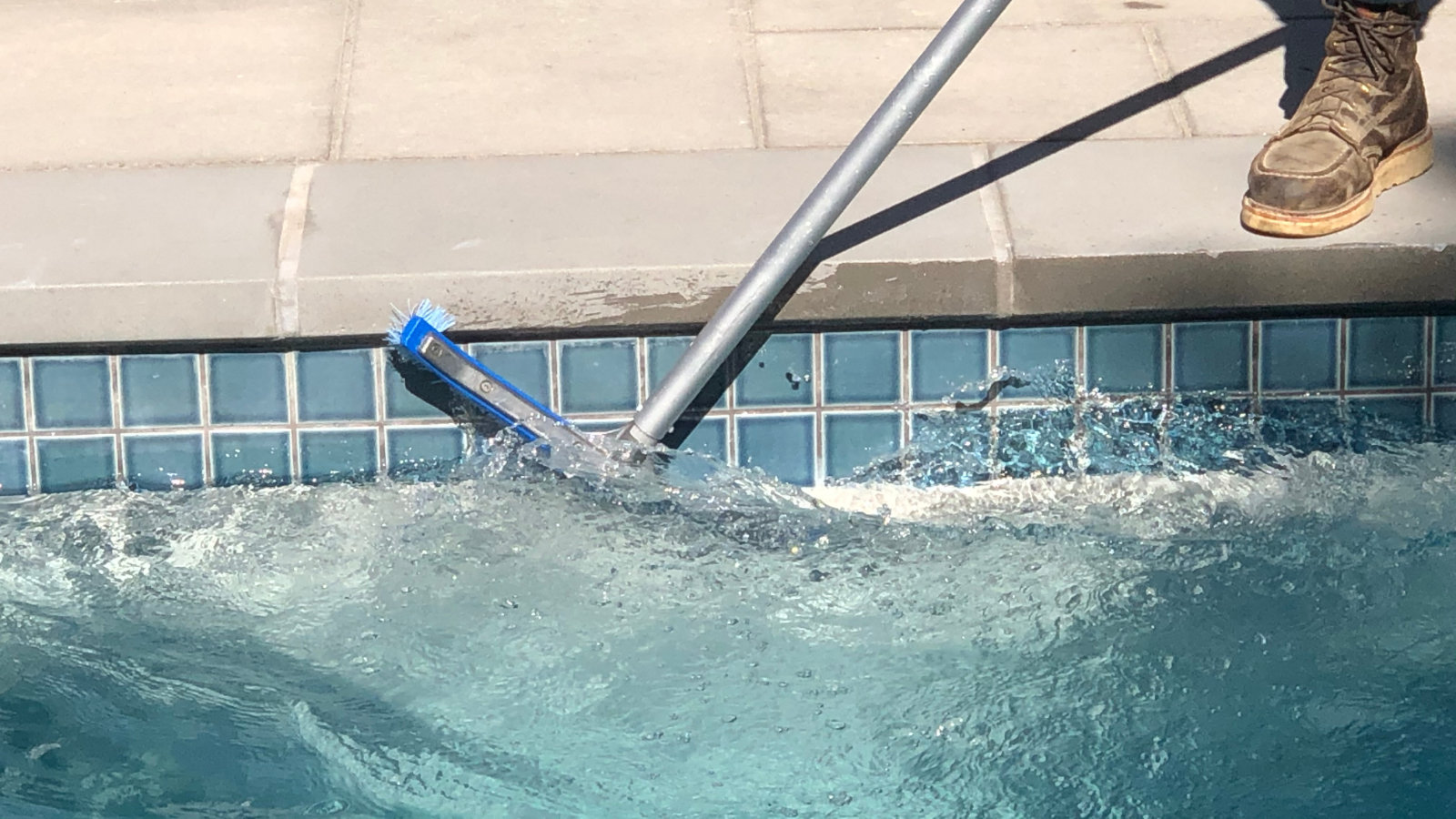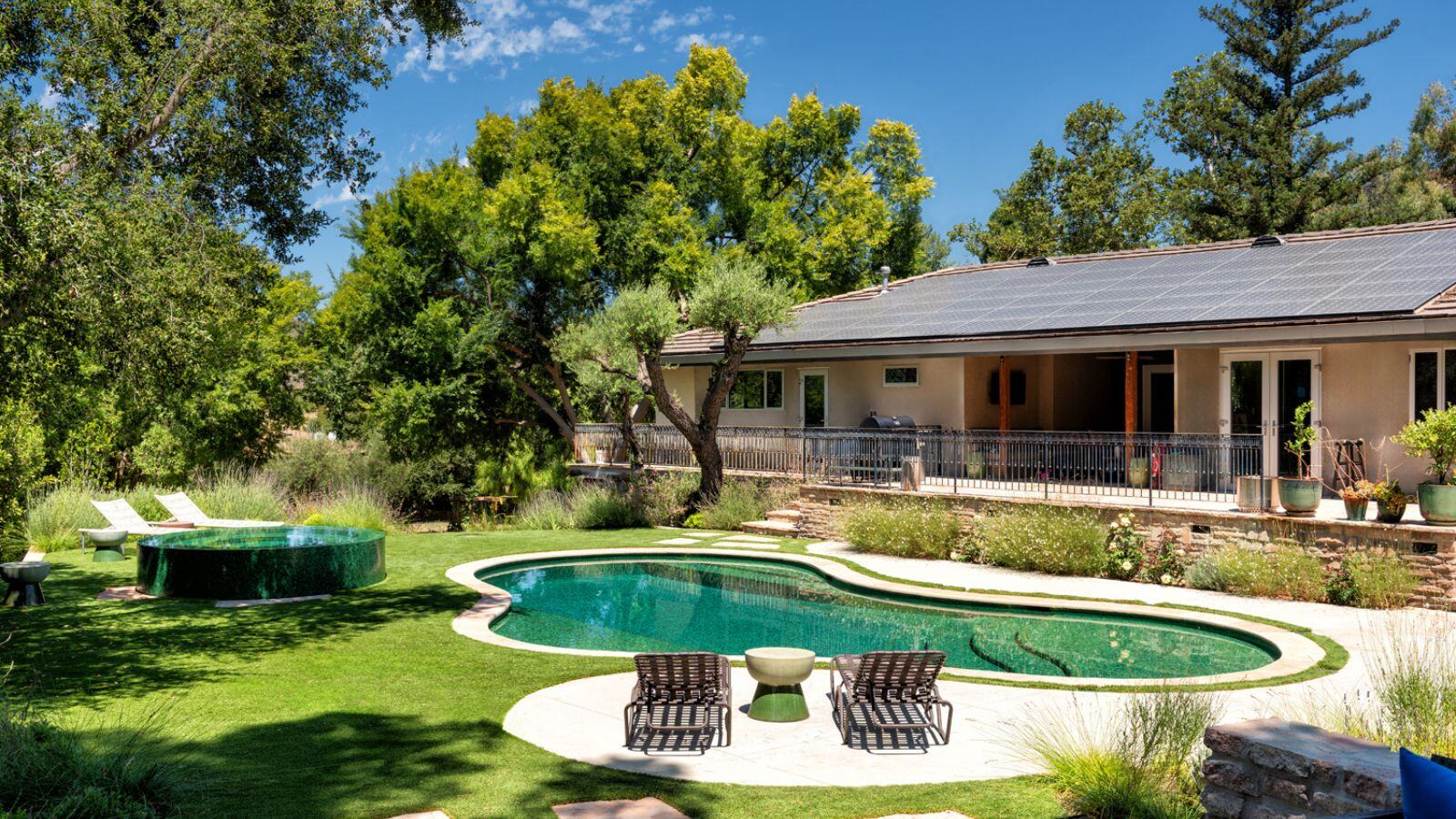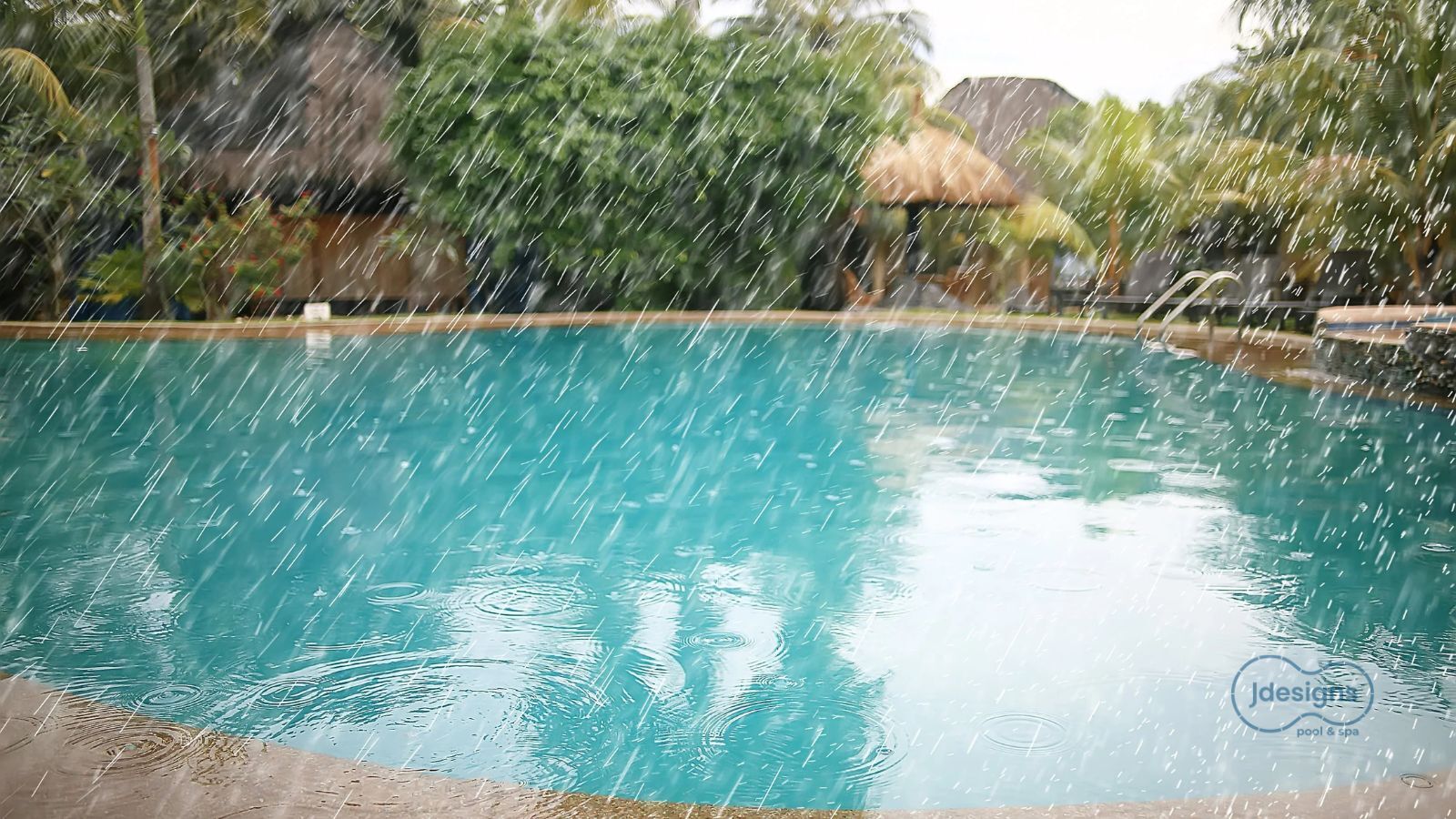Top 2026 Pool Design Trends: Shapes, Features & Pool Finishes to Love
If you’re planning to build or remodel a pool in 2026, you’re not just choosing a “look”; you’re making a long-term investment in your home, your...

Would you ever go a month without brushing your teeth?
Absolutely not.
That’s only because we already know the horrific consequences if we skimp out on dental hygiene. Whether it’s through experience or warnings from our dentist and parents, what could happen was drilled into our heads from an early age. Our teeth would suffer decay, cavities, bacteria, and eventually complete tooth loss.
So we go through the same routine daily! We brush, floss, rinse and scrape. All for a bright and healthy smile.
Too bad we don’t have the same consideration for our pools as we do for our mouths.
Weeks and even months go by without your pool being cleaned and before you know it, you’re sharing your pool water with twigs, leaves, insects, and other uninvited elements that decided to join the party.
We understand that pool cleaning is not the most exciting thing about having a pool. However, it is one of the essential things a pool owner must understand if they want to keep their pool looking magazine ready.
At J Designs Pool and Spa, we have 14 years of assisting our clients. Either by consulting them about their water chemistry, helping them select the right equipment, or even writing an entire article detailing for them the steps needed to do regular DIY cleaning of their pool.
Unfortunately, we can’t be there all the time. And because you know your pool better than anybody, you can stay on top of your pool maintenance in between visits from your pool technician.
After reading this article, you are going to learn the four basic steps to clean your pool such as:
Also, You will have an understanding of what equipment to use for each step and how often you need to clean your pool.
If you put into practice these few key points, you can make your pool last longer and look better.
Sound good? Let’s dive in.
This step is the first on the list because it’s the easiest to detect with the naked eye. So, if you want to keep a well-maintained pool, you better start from the top…or in this case, the surface.
There is nothing worse than walking out on your back porch with your cup of coffee and immediately seeing that your water looks murky or cloudy. This might happen after a rainstorm or fire in some cases, depending on what the weather conditions are like.
If this is the case, there might be something wrong with your water chemistry.
This is not to say that you have to test your pool water every day. However, if you notice something is a little different about your water, conducting a water test may not be such a bad idea.
Use a clean cup to collect water from the middle of your pool. Stay clear of any jetstreams.
Pool contractors usually provide either a test kit or a test strip. If not, you can purchase them online or at your local pool supply store.
If you are still not confident in testing the water yourself (because, hey, you’re not a chemist), then you can take a sample of water and go to the nearest pool supply store.
There, they will analyze it and share the printed results with you, which you can then share with your pool technician.
This perhaps might look the most familiar to you because you probably had to do this a lot yourself when you were younger with your family pool.
For this, essentially, you will need a leaf skimmer net on a telescopic pole. If you see any leftover leaves and twigs from your tree’s overnight tango dance, then this would be a tool that would come in handy.
Just use the pole to swipe and scoop that debris right off the surface of the water before it even has a chance to sink to the surface.
Unlike a skimmer basket, which is a part of the pool system, a leaf skimmer net is strictly used for surface area debris.
Another thing that is easy for homeowners to see is whether or not their water level is the same as it was before.
Water levels might deplete as time and use of the pool goes on. Either through splashing, hidden leaks, or evaporation, there might be some noticeable water loss.
*Side Note: For water evaporation, a pool cover might be your best prevention. You can learn more about different types of pool covers in this article.
Not sure if your water levels are off? There’s a simple “bucket test” that you can perform to know for sure.
If you notice detectable differences in your water level, it is good to contact your pool contractor, pool technician, or leak detector as soon as possible.
Now we’re getting into the nitty gritty. If we were cleaning your teeth, this is where we start going in between each unit.
Hidden debris can be detrimental to the health of your pool and without regular checking, it can cause long-term damage to your pool systems.
As I said before, a skimmer basket is different than a leaf skimmer net. The leaf skimmer net catches all of the surface-level debris, while a skimmer basket, which is situated underneath your coping, catches the debris that falls below the surface of the water.
With a clogged basket, the pump has to work harder to cycle the water, leaving it open to wear and eventual malfunction.
To clean the basket, simply:
Easy peasy! Just by those simple steps, you’ve rescued your pump from fatigue and your pool from turning into the next Black Lagoon.
A key step also is to make sure that debris from the skimmer basket doesn’t get into the pump strainer (which usually catches smaller debris).
In the same way you can run your tongue over your teeth to feel if they need a brushing, checking your pool follows the same guidelines.
If you run your hand over the plaster finish of your pool and you can feel a rough or slimy texture, then it’s time to grab the brush and vacuum.
To prevent algae and staining on your pool walls, it’s best to use a nylon bristle brush to attach to your telescopic pole and scrape off the walls and the floors of your pool.
Remember to take care of bacteria-heavy areas like the corners and high-traffic areas like the steps.
Are you a do-it-yourself kind of person? Or do you prefer to set it and leave it?
Depending on which type of cleaner you are has a heavy impact on whether you choose a manual vacuum to clean the floor and walls of your pool or a robot unit to do it all for you.
While it is the more expensive option, the robot unit will essentially cut your time in half and with the proper mechanics can cover the entire surface of your pool. Your pool builder could recommend a model which suits your pool perfectly.
Last but not least is the final step of your DYI pool maintenance: checking the filter gauge.
A pool’s filtration system is vital in ensuring that your backyard oasis stays sparkling and healthy. It removes debris, keeps your pool sanitation working properly, and keeps bacteria at bay.
The gauge is a round instrument with little tick marks and numbers to show the different levels of pressure and a needle indicator. A pressure reading between 10 – 25 psi is considered normal by industry standards.
A simple rule of thumb: The higher the psi, the dirtier your filter. Cleaning out your filter will put your gauge reading back to normal. If it is consistently high, then you might need to replace the filter entirely.
In order to keep your pool running at its optimum level, we recommend regular cleaning once or twice a week.
Simple things like skimming the surface of your pool should be done every day to prevent any debris from getting to the bottom of your pool.
Checking your filters and your water levels should be done once every month, or every other month depending on the advice of your pool builder.
Now you know the 4 basic steps to do a DIY cleaning of your pool, along with the equipment that you’d be using as well as how regularly you should do it.
Like brushing your teeth, consistent pool maintenance can help you completely avoid any damage to your pool and from paying high fees for repairs to your dentist—uh, pool builder.
At J Designs Pool and Spa, we want your pool to be at its healthiest so that you and your family can fully enjoy it. For 14 years, we have given our clients the certified knowledge we have and the tools that they need to keep their pool the envy of the neighborhood. We want to help you do the same.
If you want to know more about pool maintenance, please visit our website and schedule a consultation.
If you’re not ready for a consultation, no worries! Check out these related articles to give you more information.
The Drought of 2022 And What That Could Mean For Your Pool
Which Pool Cover Is Right For Me: Solar, Vinyl, Mesh, or Automatic? (Pros and Cons)
5 Common Mistakes First-Time Pool Buyers Make (And How To Avoid Them)

If you’re planning to build or remodel a pool in 2026, you’re not just choosing a “look”; you’re making a long-term investment in your home, your...

Pool Overflows After Heavy Rain and How to Lower Your Pool's Water Level

The Hidden Soil Risks That Can Destroy Your Pool and Budget Why a Proper Soils Exploration Is Critical Before Building a Pool: A homeowner’s guide to...